- Home
- Michael Newton
The Texarkana Moonlight Murders: The Unsolved Case of the 1946 Phantom Killer Page 6
The Texarkana Moonlight Murders: The Unsolved Case of the 1946 Phantom Killer Read online
Page 6
For good or ill, over the next forty-eight years, Hoover ran the bureau as his personal fiefdom and a veritable cult of personality, demanding exemption of his agents from Civil Service guidelines to control their lives completely and capriciously, directing his men—there were no female agents under Hoover—to violate as many laws as they enforced through burglaries, illegal wiretaps, theft of private mail, “frame-ups” of innocent defendants, and sporadic use of deadly force amounting to summary execution. On the positive side, he raised standards for employment, restricting (but never fully eliminating) political patronage appointments; instituted rigorous standardized training; and established the nation’s first significant forensic laboratory. In the process, through manipulation of the media, Hoover inflated his own reputation to the point of fantasy and beyond: claiming personal credit for daring arrests made by rank-and-file agents, also claiming credit for disbandment of the 1920s Ku Klux Klan (his men arrested one Klan officer in 1925; the KKK endured till 1944), and so on. To this day, bureau historians insist that the FBI killed or arrested “every major gangster in America by 1936”—an assertion so far divorced from reality that it must be called farcical. (In 1953, Hoover assigned agents to write a report “documenting the nonexistence of organized crime” nationwide; five years later, he dismissed his own bureau’s evidence of a national Mafia as “baloney.”)33
In 1946, the FBI had no legal jurisdiction in cases such as the Texarkana slayings. Thanks to a statute passed in 1934, it was authorized to pursue a fugitive who crossed state lines while attempting to avoid arrest, trial, or imprisonment.34 Additionally, the bureau’s lab in Washington and its agents in the field routinely aided state and local police with examination of fingerprints and forensic evidence collected from crime scenes, as time and money allowed.
Controversy surrounds the FBI’s initial entry to the Texarkana case. The bureau’s first official notice of the murders was embodied in a memo sent to Alex Rosen, assistant director of the FBI’s Investigative Division since November 1940.35 Headed “Police Cooperation,” it read as follows (with spelling and punctuation intact):
PURPOSE:
To furnish information received telephonically from the Dallas Division, in accordance with your request, belying a newspaper report that the Bureau, local and state officials are investigating the above [Martin-Booker and Griffin-Moore] murders.
BACKGROUND:
The April 15, 1946 Washington Times-Herald carries an article date-lined Texarkana, Texas, which states, “The bodies off Paul Martin, 17, and Betty Hooker, 15, were found near here early yesterday after a high school dance. The Federal Bureau of Investigation, the Texas Rangers, Arkansas State police and local police joined in one of the biggest murder investigations in recent Texas history.”
The article continues that police believe the unsolved killings were committed by the slayer of Richard Griffin and Polly Ann Moore, who were shot and killed March 24, 1946. .32 calibre shell cases were found in the vicinity of Martin’s car, and Capt. Gonzales, head of the Texas Rangers stated that .32 calibre Bullets were also used in the slaying of Griffin and Miss Moore. The remainder of the news item describes the circumstances surrounding the finding of the bodies in the latest murder.
BUREAUS PARTICIPATION IN INVESTIGATION:
SA [name deleted] of the Dallas office telephonically advised that the Bureau is not actively engaging in the investigation of these murders; that no Federal violation is apparent. He stated that the newspaper story undoubtedly arose in the following manner. On the morning of April 14, Sheriff W.H. Pressley, Bowie County, Texas, requested the resident agent at Texarkana, Texas, and at Texarkana, Arkansas to assist him in photographing the crime scene and in dusting the car for latent fingerprints. The agents rendered this assistance but took no further active part in the investigation. [Name deleted] stated this aid was given as a matter of police cooperation. He did not know if any evidentiary material susceptible to examination by the FBI lab was uncovered.
RECOMMENDATION:
It is suggested that the Dallas office be instructed to maintain close liaison with local investigating officers proferring full cooperation to undertake a UFAP [unlawful flight to avoid prosecution] investigation should the Subject be identified and other requirements for such investigation are present.36
J. Edgar Hoover agreed in a memo to Dallas, dated April 16. It read: “You are instructed to maintain close liaison with investigating officers this case proffering full cooperation laboratory and identification facilities, and to remain alert to possibility of UFAP investigation if subject identified. Advise Bureau of pertinent developments.”37 Still, Hoover was concerned. On the same day, viewing a photocopy of the aforementioned Washington Times-Herald article, he wrote in its margin: “What is our jurisdiction?”38
Five weeks later, on May 24, Agent Wyly in Dallas sent the following memo to Hoover, streamlining discussion of the Texarkana cases:
UNSUB [unknown subject], MURDER OF JAMES PAUL MARTIN, BETTY JO BOOKER, APRIL FOURTEEN, FORTYSIX, MURDER OF RICHARD L. GRIFFIN, POLLY ANN MOORE, APRIL TWENTYFOUR, FORTYSIX, TEXARKANA, TEXAS, POLICE COOPERATION. IN VIEW OF LONG TITLE AND THE FACT THAT CONTINUOUS CORRESPONDENCE IS BEING HAD IN THIS MATTER, IT IS RECOMMENDED THAT THE CODE WORD TEXMUR BE SUBSTITUTED FOR THE TITLE IN THE FUTURE. UNLESS ADVISED TO CONTRARY RECEIVED, ALL FUTURE CORRESPONDENCE WILL BEAR THE CODE WORD TEXMUR, MEANING TEXARKANA MURDERS.39
* * *
While Hoover’s bureau thus adopted a peripheral support role in the manhunt, state and local law enforcement agencies spared no effort in pursuit of Texarkana’s nocturnal slayer. Local native Wayne Beck would later describe Texarkana in the spring of 1946 as “the most guarded city in the United States,” and while some observers might consider that hyperbole, it is a fact that officers seemed omnipresent after the Martin-Booker murders.40
Many of the leads they chased were false ones, offered up from fear, from spite, or with the prospect of reward. “As their ranks grew,” author Joseph Geringer suggests, “the organizational mixture resembled that familiar case of too many cooks spoiling the broth. Investigations were often redundant and the once-lineal chain of communication went zig-zag.”41
And some in the know blamed those problems on Captain Gonzaullas.
Decades after the fact, Texarkana Gazette editor J. Q. Mahaffey told Dallas reporter Kent Biffle, “My principal headache was Capt. M. T. ‘Lone Wolf’ Gonzaullas of the Texas Rangers. Lone Wolf, who long since has joined the Ghost Riders in the Sky, was without doubt the best-looking man I’ve ever seen. He was of Spanish extraction and wore a spotless khaki suit and a white, 10-gallon hat. He packed two pearl-handled revolvers and brought with him all the legends of the Texas Rangers. For instance, he didn’t deny that he was the ranger who sat in the cashier’s office of the Crazy Hotel in Mineral Wells in Palo Pinto County and gunned down two unlucky ex-convicts who sought to rob the place. He was so good-looking that the girl reporters couldn’t leave him alone. He didn’t have time to hunt for the Phantom. He was too busy giving out interviews and trying to run the Gazette. All the other officers on the case became rather jealous of Lone Wolf and complained bitterly every time his picture appeared in the paper.”42
Aside from the top ranger’s matinee idol appearance, Mahaffey had nothing but scorn for his advice to frightened locals, offered via Radio KCMC. When asked, “What advice would you give the people to quiet their fears?” Gonzaullas replied in funereal tones, “I’d tell them to check the locks and bolts on their doors and get a double-barreled shotgun to take care of any intruder who tried to get in.”43
That message hit home with Texarkansans. Resident Ed Malcolm later said, “The town was like a tinder box, waiting for something to go off.” Despite the onset of a heat wave, barricaded homes were locked up tight. Dan Young recalled, “The thing that sticks in my mind is me and my family in a house that summer with the doors shut and the windows shut. We had [only] a four-inch fixed fan to cool the house, and it wa
s hot.”44
Proximity to lover’s lane made matters worse. Ida Lou Ames, residing with her parents near the site where police found Betty Booker’s corpse, said, “We were scared to death. We spent the night in the same house for six weeks. Noise carries in a still, clear, cool night, but on that night we did not hear anything. And we lived so close.”45
Charles Kennedy, a first cousin of Gazette editor Mahaffey, moved his family to Texarkana a year before the murders and kept them updated during the reign of terror with late-breaking news. His daughter later told the Dallas Morning News, “We were as terrorized as the other people. We had window bars installed. My dad kept his pistol handy.” Nor was the fear confined to Texarkana proper. Future trust firm CEO John Norman remembered, “I was a teenager, living in New Boston [twenty miles from Texarkana] at the time. That summer, we were afraid to sleep with windows open. Rumors were rife about sightings and near misses.”46
James Grigson, later a forensic psychologist, was fourteen when the killer began his rampage. A half-century later, he told the Dallas Observer, “There was a kind of mass fear that I’ve not seen since. The murders were all the adults talked about. And while the kids didn’t read the paper much or listen to the news on the radio, we heard what our parents were saying.”47 Not all of them were frightened into staying home, however. As researcher Wayne Beck reports, “Many students who were especially incensed by the killing of two fellow students were conducting their own search. Armed young couples were parking on lonely roads hoping the mad killer would try an attack on them.”48
Newspapers did their part to fuel the panic. On April 16, 1946, the now-defunct Texarkana Daily News christened their city’s elusive gunman the “Phantom Killer.”49 J. Q. Mahaffey faced stiff competition, recalling that “all of the news agencies, including the Associated Press, United Press and the International News Service, sent reporters,” as did individual papers ranging from the Houston Chronicle, Dallas News, New York Times, and Washington Post to The Times of London.50 INS columnist Kenneth Dixon may have captured the city’s mood best, when he wrote, “I have arrived in Texarkana, the home of the Phantom Killer. I have just talked to a newspaperman named Graves. I am quartered at the Grim Hotel, and the hair is rising on my neck.”51
* * *
Police work suffered from the rising panic. Rookie trooper Max Tackett, though new on the job, shared J. Q. Mahaffey’s disdain for Captain Gonzaullas, telling Mahaffey and anyone else who would listen that the Lone Wolf “couldn’t track an elephant in a ten-foot snow.”52
Miller County sheriff’s deputy Tillman Johnson had a similarly low opinion of Gonzaullas, later telling friend Glenn Ferguson that the Lone Wolf’s “main contribution to the case was grandly descending the staircase of his hotel in freshly pressed tan gabardines, ornate revolvers and white Stetson and courting the press, particularly the young, female reporters.”53 One night, on patrol with Johnson, Gonzaullas repeated his vow to remain in Texarkana until the case was solved. As Johnson told reporter Carlton Stowers in 2001, “I asked him if he’d thought about checking out the real estate market for a house to buy. He didn’t think I was very funny.”54 In fact, as Johnson recalled, speaking to Ferguson, the Lone Wolf “didn’t have much use for him” thereafter.55
Dissension aside, the authorities still did their best. Patrols were conducted in cars, on foot, and on horseback, while well-armed decoys parked on rural lover’s lanes, hoping to draw the Phantom within range. Some stumbled over teenagers on the same mission and dispersed them. In the weeks after the Martin-Booker killings, some three hundred persons were detained for questioning—ex-convicts, drifters, hermits, anyone considered “strange” by neighbors—but none could be linked to the crimes.56 Captain Gonzaullas and Sheriff Presley reported “definite progress” on April 15, “made through the process of elimination, both as regards to suspects and motives,” but it was all illusory.57 As Gonzaullas biographer Brownson Malsch summarized their conclusions:
It had become recognized that they were up against a psychopathic killer who was sexually aroused by the sight of a couple in a secluded spot. It could not be determined whether the letting of blood was a concomitant part of his gratification, or whether the murders were committed solely to remove any possible witness of his deeds. It was also obvious to the investigators that they were dealing with a man of above average intelligence.58
Indeed? While newspapers (falsely) denied “rumors” of sexual assaults upon the Phantom’s female victims, speculation on repeated homicides to silence witnesses seemed pointless. Garden variety voyeurs do not approach the objects of their fascination, thus are not observed, and have no need to silence anyone. Police, of course, knew that the Phantom’s chosen women were attacked. Their motives for concealing it—and, in some cases, for denying it today—remain unclear.
* * *
Paul Martin and Betty Jo Booker were laid to rest on April 16, following a memorial service at Beech Street Baptist Church. An estimated one thousand mourners, many of them teenagers released from school for the day, braved rain to attend the service and graveside ceremony. Jerry Atkins, leader of the Rhythmaires, served as one of Booker’s pallbearers.59
By then, investigation of the murders was proceeding on two fronts. The public side was mobilized when Captain Gonzaullas invited citizen participation of a sort, telling the Texarkana Gazette, “I think a reward, offered to any citizen for information leading to the arrest and conviction of the slayer or slayers, will help the case considerably. I can think of nothing better that citizens might do to help our cause.” A committee swiftly organized, chaired by John Holman, and broadcast an appeal for pledges over radio station KCMC. The Otis Henry VFW Post, scene of the Rhythmaires’ last performance, was first to respond, with an offer of $250. The local Lions Club matched that pledge, and more offers followed, totaling $4,280 by April 20.60
All in vain. On April 20 the Gazette reported that news from the investigation had “simmered down to nothing.”61
In fact, however, the Gazette and Daily News were actively suppressing information on the crimes. J. Q. Mahaffey admitted as much on April 17, with a front-page statement that both papers were “cooperating with the officers at the urgent request of Captain Gonzaullas, and are withholding certain information that the officers believe would be detrimental to their investigation.”62 Such censorship is routine in ongoing criminal matters, though police often choose to leave journalists out of the loop, rather than trusting them to sit on “scoops.” Gonzaullas thanked Mahaffey in a public statement three days later, telling worried citizens, “The Texarkana newspapers have co-operated with us all through this investigation and we intend to co-operate with them in furnishing them the information they desire when the time comes for divulging that information. The newspapers are not printing rumors and have assured us they will not. Any information the public hears about this case will not be official unless it comes from us through the newspapers. We will continue to work day and night on the investigation. We will appreciate information from citizens and all such information will be treated confidentially.”63
One action not concealed was the issuance of a special notice on April 18. It read:
WANTED FOR MURDER
WANTED person or persons unknown, for the murder of Betty Jo Booker and Paul Martin, on or about April 13, 1946, in Bowie County, Texas. Subject or subjects may have in their possession or may try to dispose of a gold-plated Bundy E-flat Alto saxophone, serial #52535, which was missing from the car in which the victims were last seen, when it was found abandoned about 1.55 miles from the location of the boy’s body, and about 3 miles from the location of the girl’s body. This saxophone had just been rebuilt, replated, and repadded, and was in an almost new black imitation leather case with blue plush lining.
It is requested that a check be made of music stores and pawn shops. Any information as to the location of the saxophone or description and whereabouts of the person connected with it should be forwar
ded immediately to the Sheriff, Bowie County, Texarkana, Texas, and the Texas Department of Public Safety, Austin, Texas.64
Gonzaullas backed up that circular with a press conference on the same day, telling reporters, “We’re up against a clever, intelligent killer. We have information but I can’t give it to the public. We are working every day and night on every possible lead.” Despite that assurance, rumors ran rampant. One claimed the Phantom had been captured, his arrest concealed. Another claimed a local minister had surrendered his son as a suspect. Gonzaullas dismissed each tale in turn, saying, “We do not, we do not have the murderer now. We have filed no complaints against anyone. These wild rumors are a hindrance to the investigation and harmful to innocent persons.”65
Intrigued, a persistent gathering of some two dozen locals passed their days outside of Sheriff Presley’s office, watching lawmen come and go on urgent, unexplained errands. Some who telephoned the office—like two women who phoned in reports of precognitive dreams that depicted the murders—were curtly rebuffed. A clutch of teenage girls supplied Sheriff Presley with paper items allegedly bearing the fingerprints of “their suspect,” but current technology could raise no latents from the documents.66
Captain Gonzaullas, asked to reconstruct the latest double homicide for journalists, demurred, telling the pack, “I cannot do that at this time. Of course, I have my opinion as to how the murders were committed but I don’t think this is the time to be putting out theories. I might be wrong.”67 Betty Booker’s mother suffered no such inhibition. She told the Gazette, “I sincerely believe that my daughter’s death was a sacrifice. It was a warning to other parents who might let their children roam too free. I cannot believe, however, that my daughter was one of those. I believe that my daughter was an innocent victim.”68

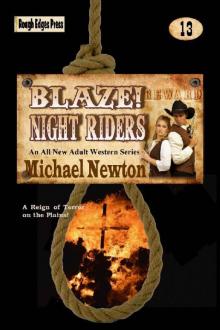 Blaze! Night Riders
Blaze! Night Riders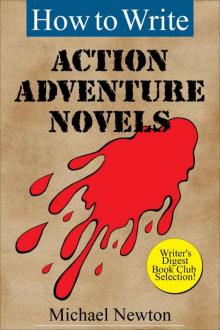 How to Write Action Adventure Novels
How to Write Action Adventure Novels Blaze! Bad Medicine
Blaze! Bad Medicine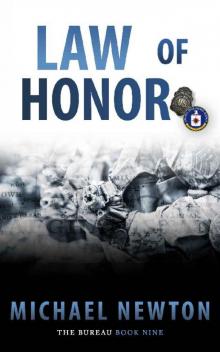 Law of Honor
Law of Honor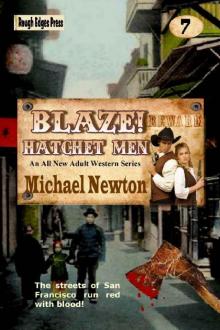 Blaze! Hatchet Men
Blaze! Hatchet Men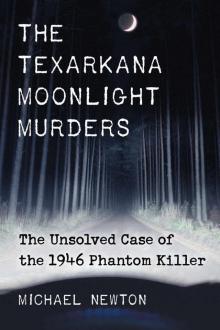 The Texarkana Moonlight Murders
The Texarkana Moonlight Murders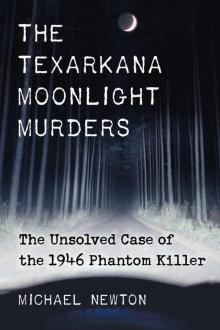 The Texarkana Moonlight Murders: The Unsolved Case of the 1946 Phantom Killer
The Texarkana Moonlight Murders: The Unsolved Case of the 1946 Phantom Killer